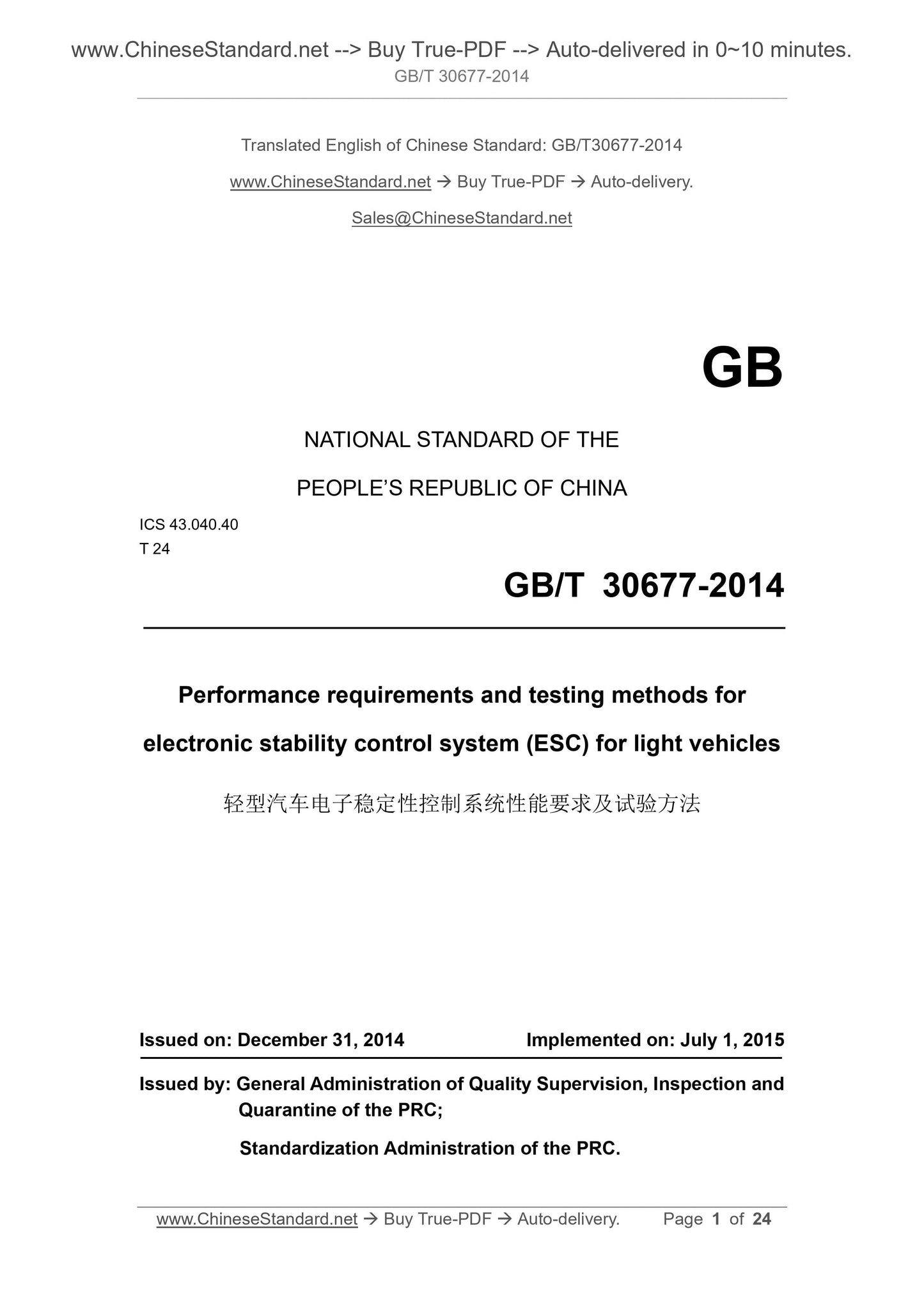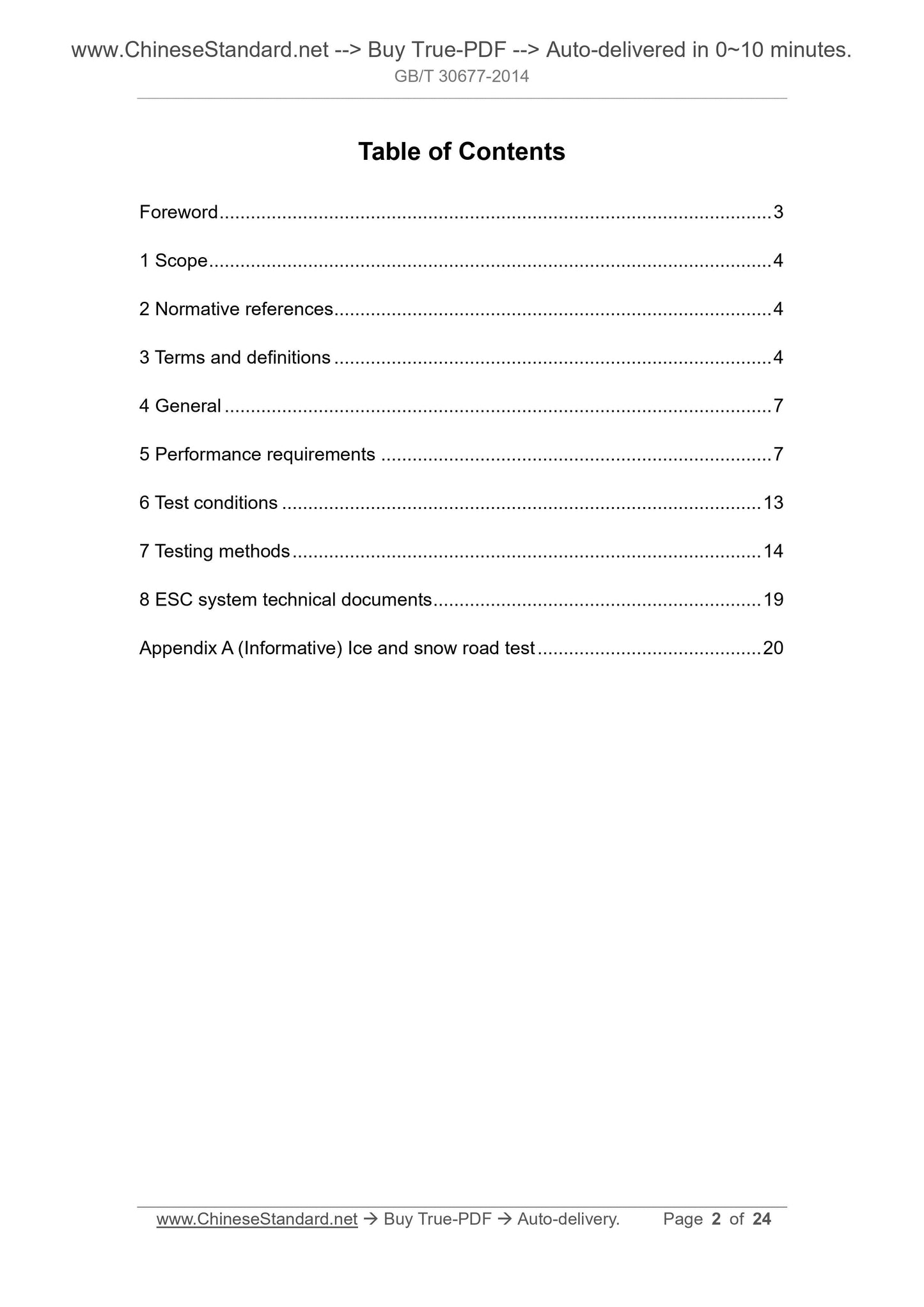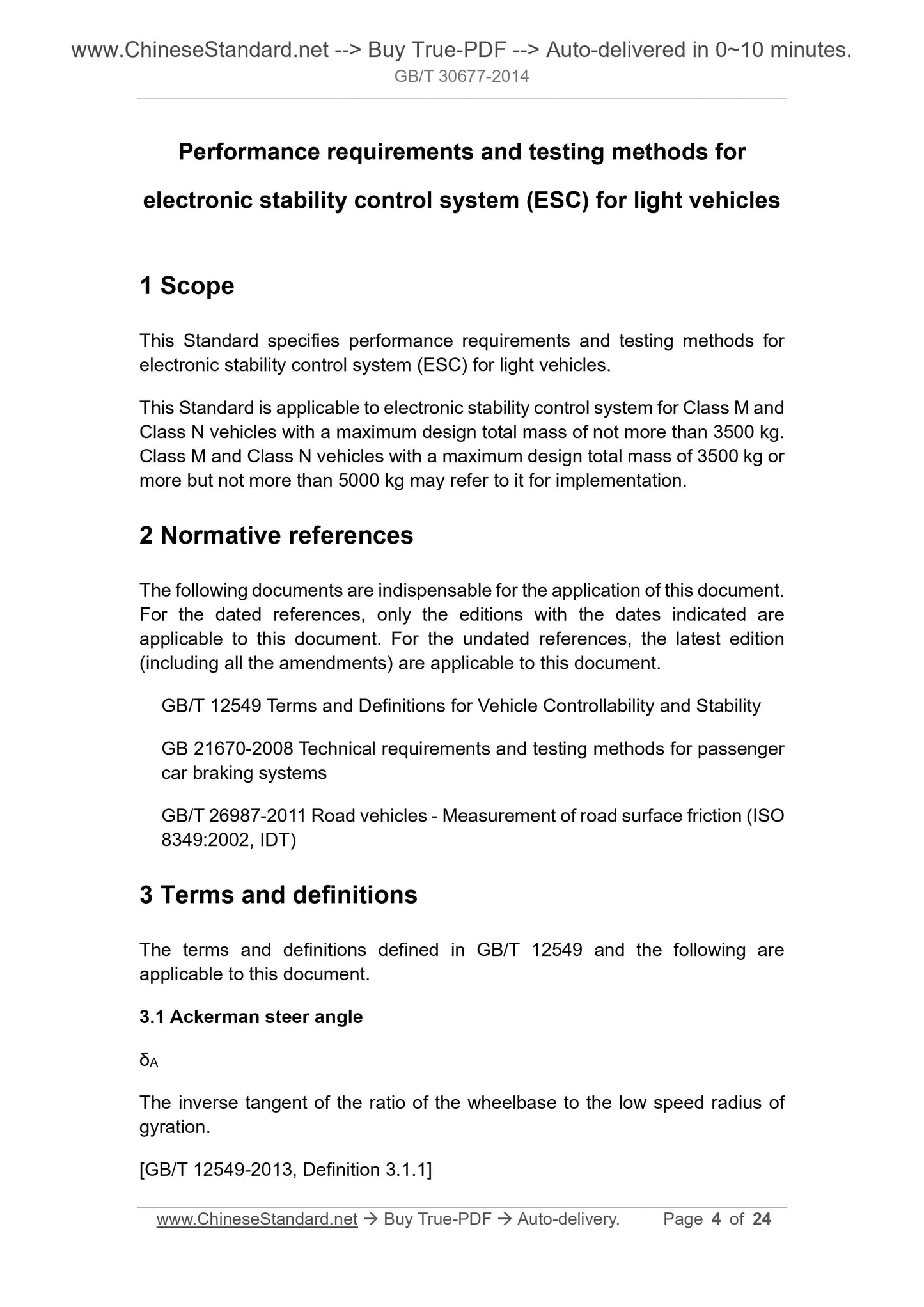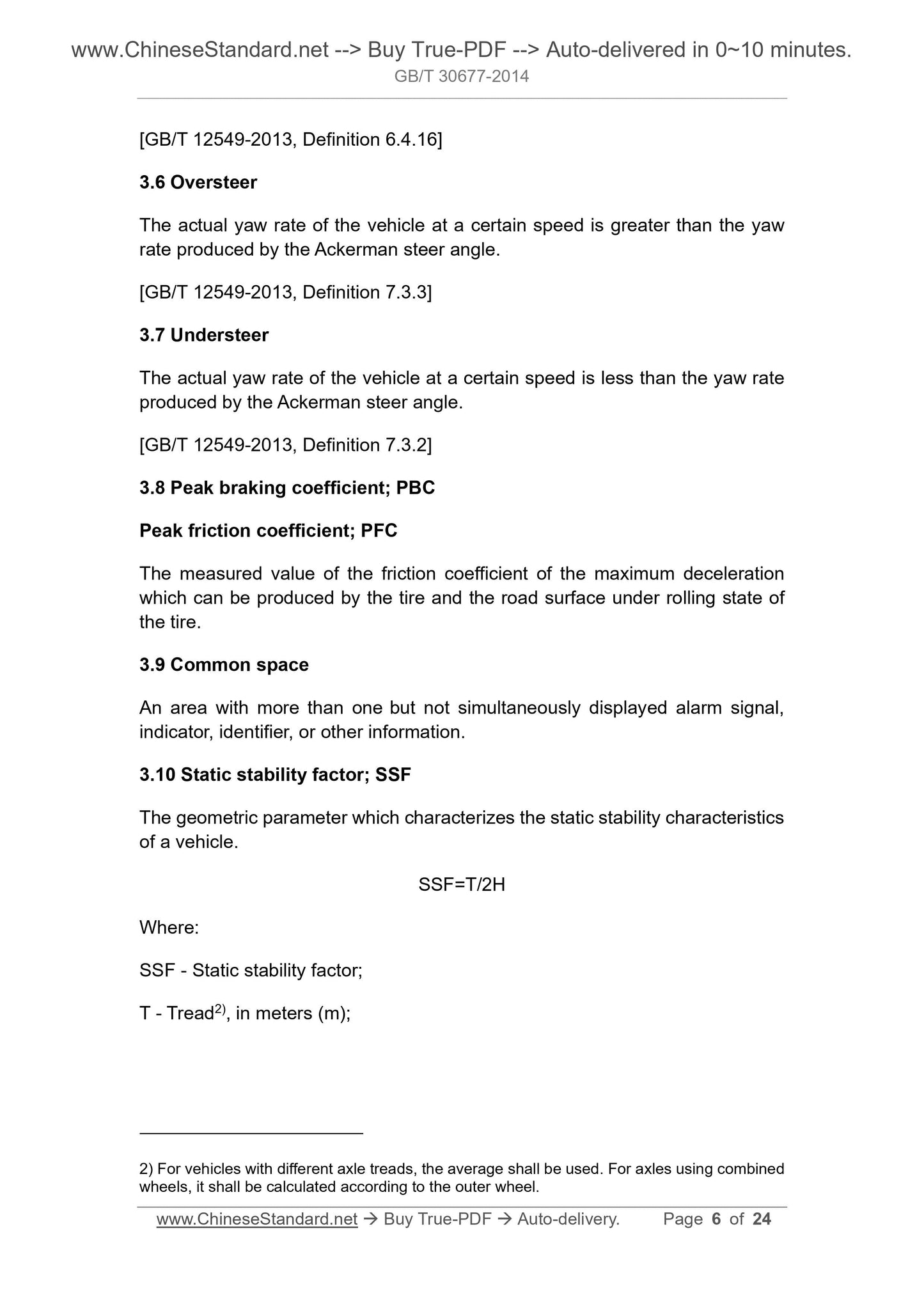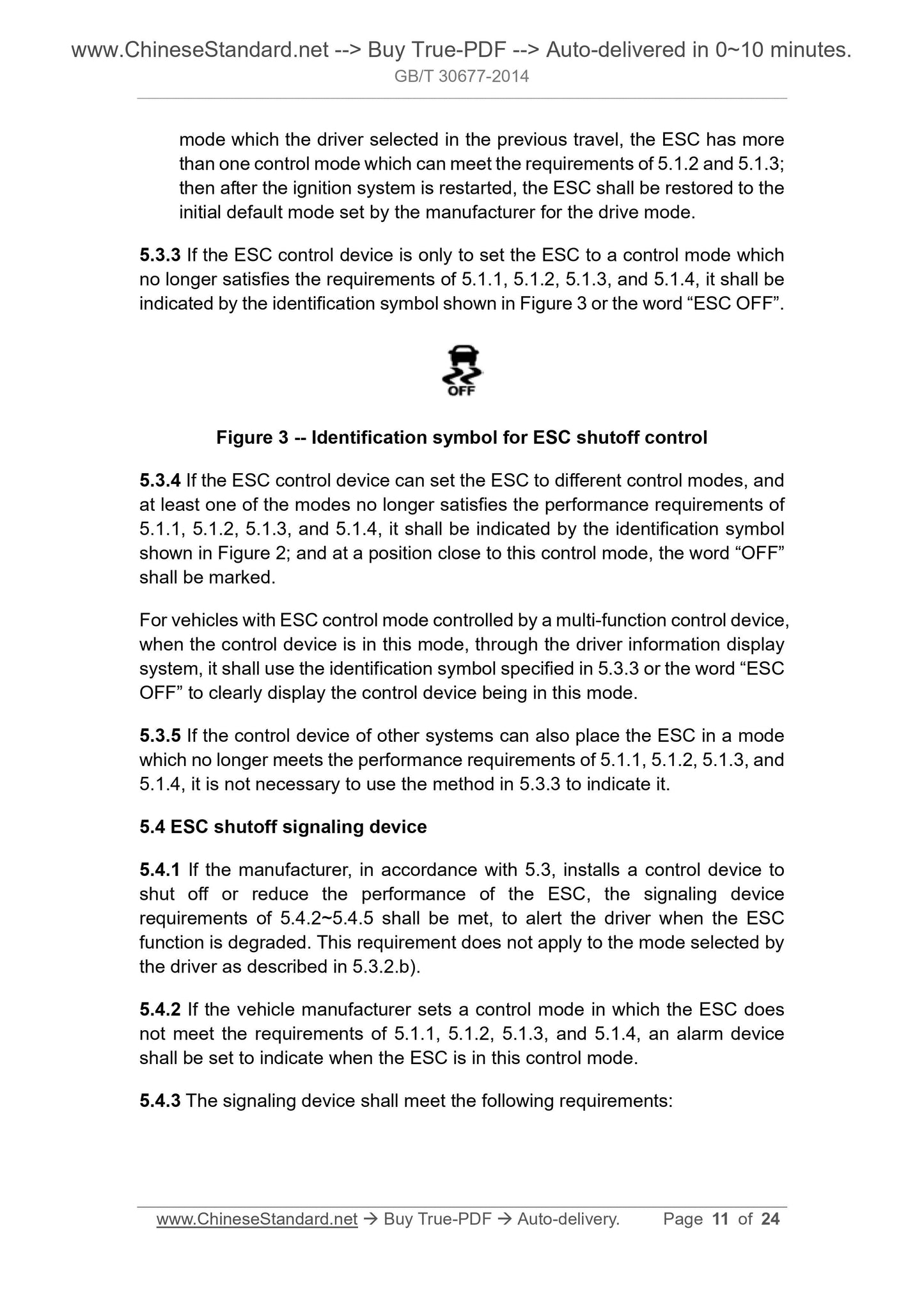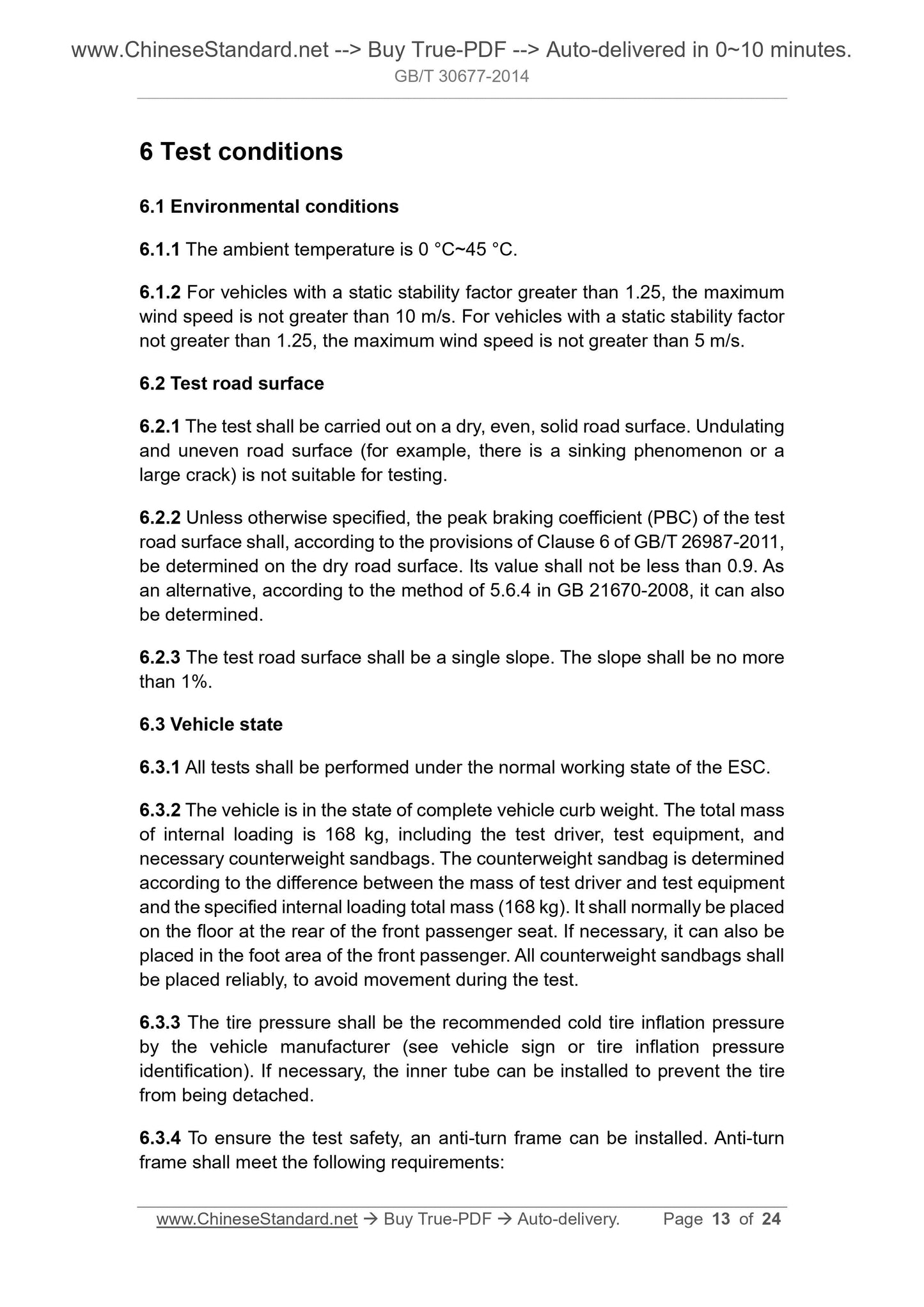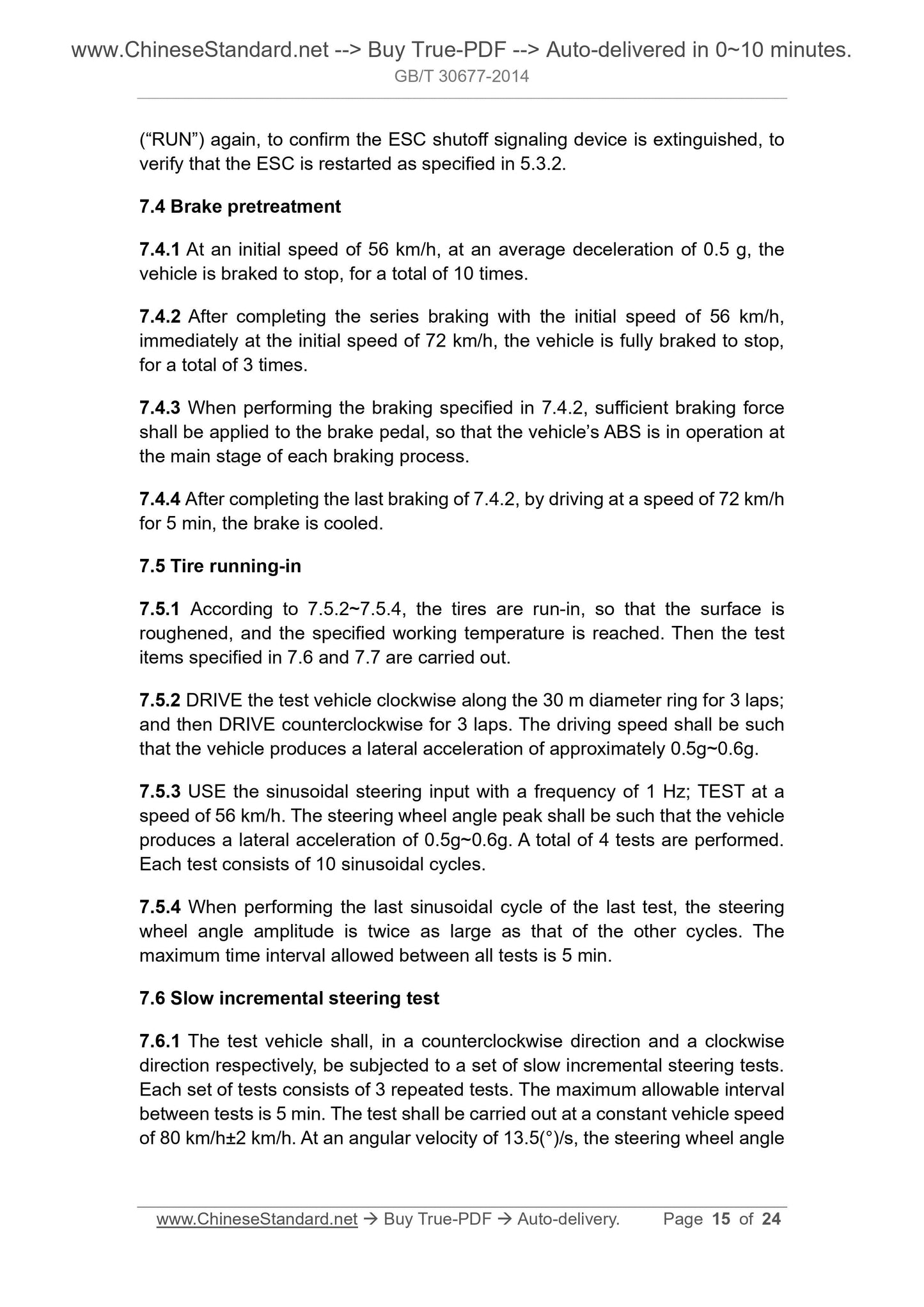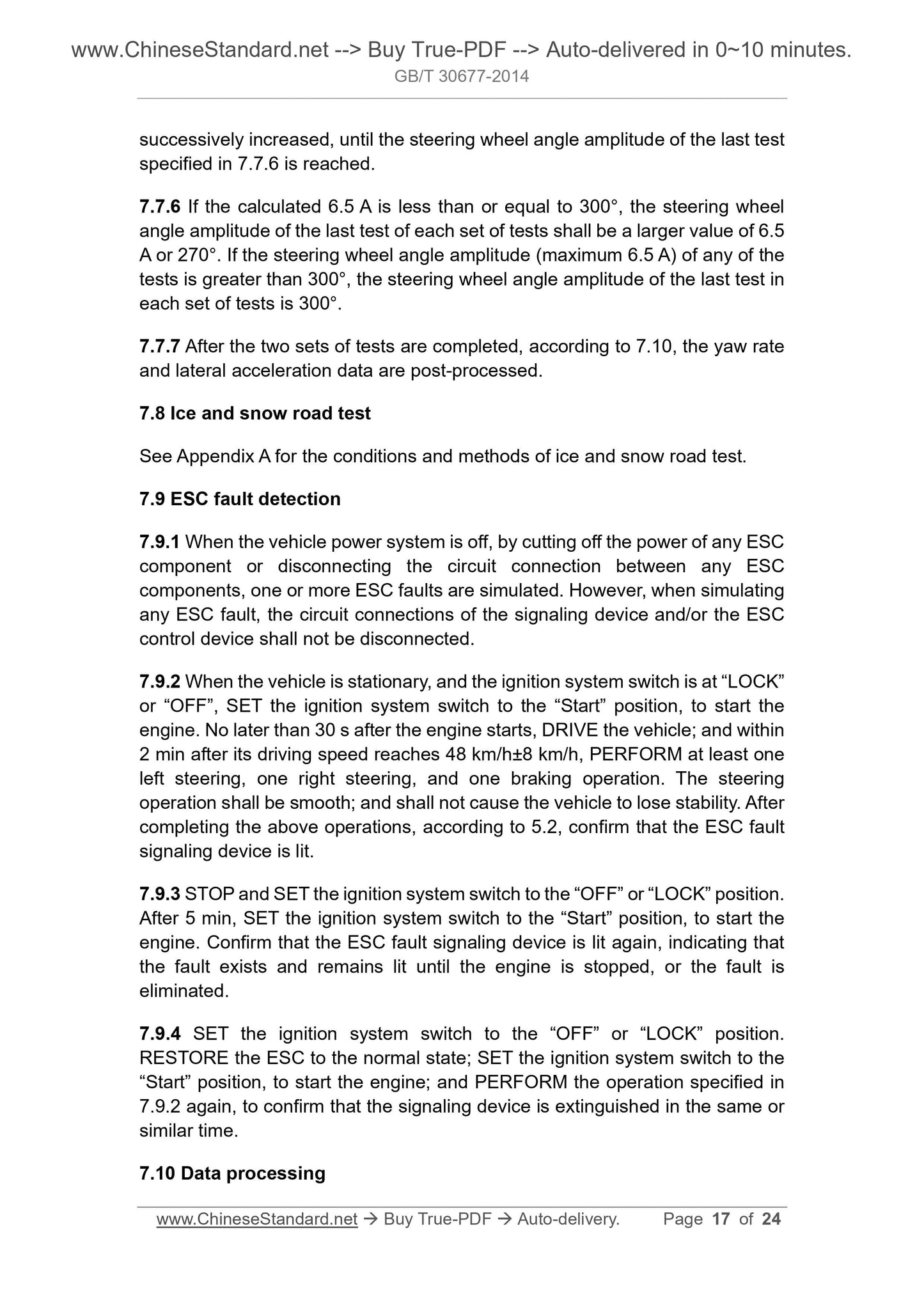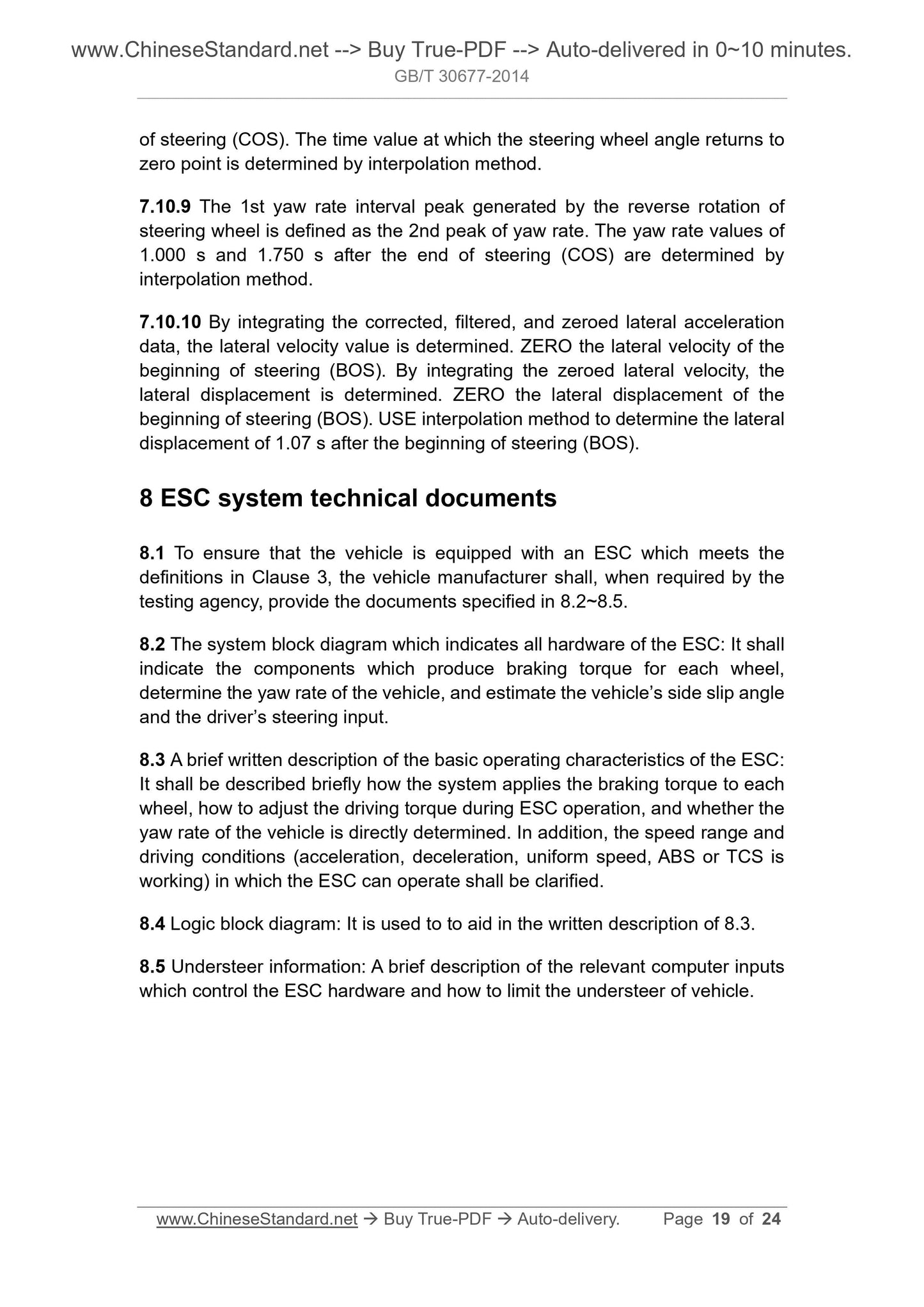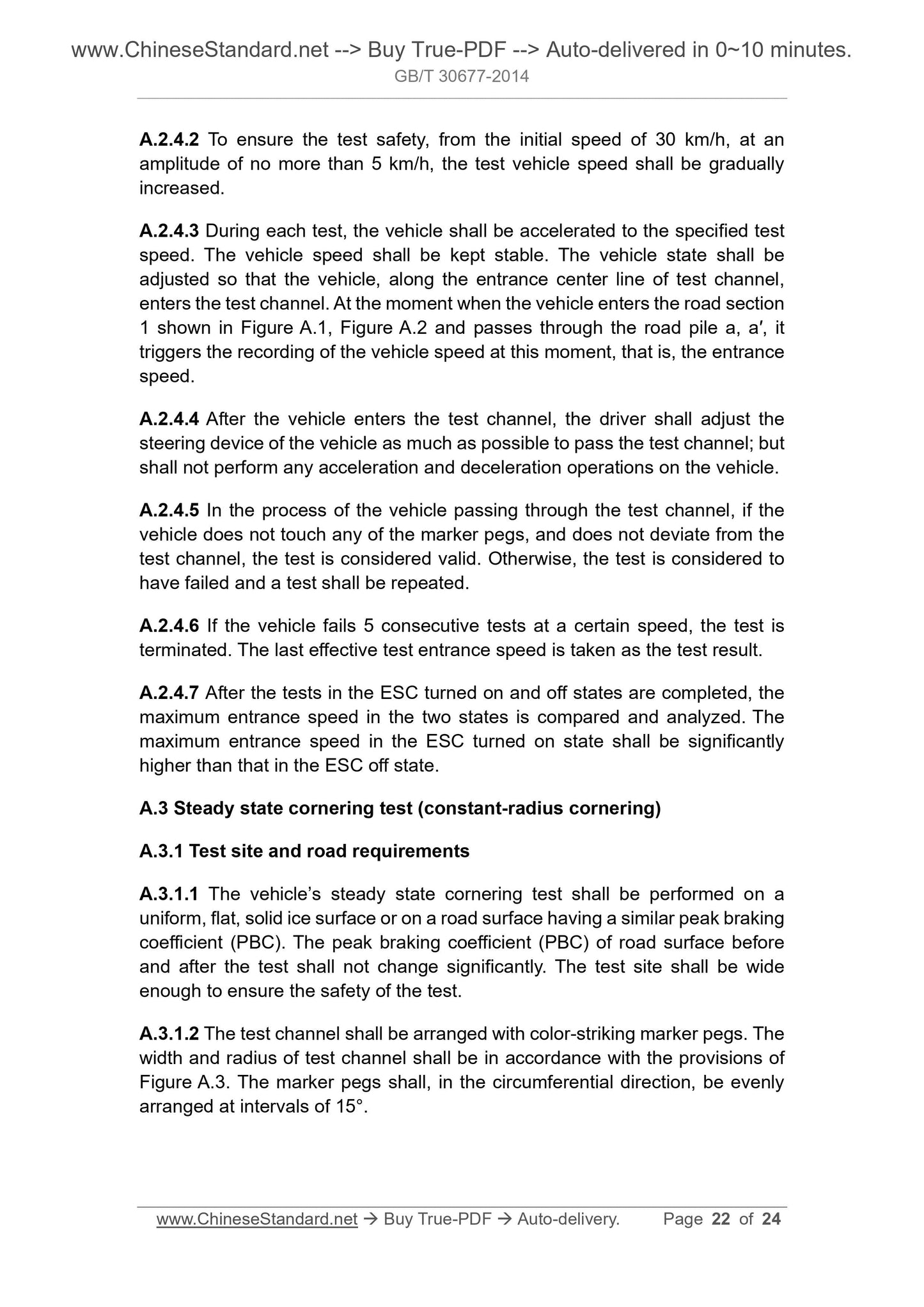1
/
of
10
www.ChineseStandard.us -- Field Test Asia Pte. Ltd.
GB/T 30677-2014 English PDF (GB/T30677-2014)
GB/T 30677-2014 English PDF (GB/T30677-2014)
Regular price
$150.00
Regular price
Sale price
$150.00
Unit price
/
per
Shipping calculated at checkout.
Couldn't load pickup availability
GB/T 30677-2014: Performance requirements and testing methods for electronic stability control system (ESC) for light vehicles
Delivery: 9 seconds. Download (and Email) true-PDF + Invoice.Get Quotation: Click GB/T 30677-2014 (Self-service in 1-minute)
Newer / historical versions: GB/T 30677-2014
Preview True-PDF
Scope
This Standard specifies performance requirements and testing methods forelectronic stability control system (ESC) for light vehicles.
This Standard is applicable to electronic stability control system for Class M and
Class N vehicles with a maximum design total mass of not more than 3500 kg.
Class M and Class N vehicles with a maximum design total mass of 3500 kg or
more but not more than 5000 kg may refer to it for implementation.
Basic Data
| Standard ID | GB/T 30677-2014 (GB/T30677-2014) |
| Description (Translated English) | Performance requirements and testing methods for electronic stability control system (ESC) for light vehicles |
| Sector / Industry | National Standard (Recommended) |
| Classification of Chinese Standard | T24 |
| Classification of International Standard | 43.040.40 |
| Word Count Estimation | 15,176 |
| Date of Issue | 12/31/2014 |
| Date of Implementation | 7/1/2015 |
| Quoted Standard | GB/T 12549; GB 21670-2008; GB/T 26987-2011 |
| Regulation (derived from) | National Standards Bulletin 2014 No. 33 |
| Issuing agency(ies) | General Administration of Quality Supervision, Inspection and Quarantine of the People's Republic of China, Standardization Administration of the People's Republic of China |
| Summary | This Standard specifies the performance requirements and test methods for light vehicle electronic stability control systems. This Standard applies to the maximum design total mass not greater than M and N categories of electronic stability control system |
Share
